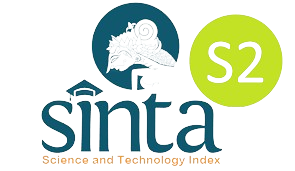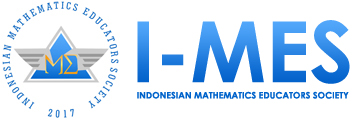Integration of item response theory in the development of PhET-based graphing lines worksheets for optimizing student algebra competence
DOI:
https://doi.org/10.29408/jel.v11i1.27634Keywords:
Algebra competence, graphing lines, item response theory, parameter logistic, phet interactive simulationAbstract
This study develops and evaluates a graphing line worksheet based on PhET Interactive Simulation integrated with Item Response Theory (IRT) methods to enhance student algebra competence. Involving 120 students, the worksheet comprises 12 items measuring four key indicators: understanding the geometric significance of line slopes, constructing line equations, graphing from line equations, and predicting the effects of variable changes. The 2-Parameter Logistic (2PL) model of IRT was employed to analyze item difficulty and student ability in logit form. The results indicate that the worksheet is effective in improving student algebra competence, with Items 1 and 11 demonstrating a good balance between difficulty and discrimination. Item 2 requires further review because of its high difficulty, whereas Item 12 is considered too easy. Heatmap analysis and Item Characteristic Curves (ICC) revealed variations in student response patterns, confirming the test's ability to evaluate diverse levels of student ability. The integration of interactive simulation and IRT has proven to be an effective strategy in instructional design, supporting adaptive and personalized learning.
References
Ackerman, T. A., & Ma, Y. (2024). Examining differential item functioning from a multidimensional IRT perspective. Psychometrika, 89(1), 4–41. https://doi.org/ 10.1007/s11336-024-09965-6
Alam, A. (2023). Harnessing the power of AI to create intelligent tutoring systems for enhanced classroom experience and improved learning outcomes. Lecture Notes on Data Engineering and Communications Technologies, 171, 571–591. https://doi.org/10.1007/978-981-99-1767-9_42
Alhadlaq, A. (2023). Computer-based simulated learning activities: exploring saudi students’ attitude and experience of using simulations to facilitate unsupervised learning of science concepts. Applied Sciences 2023, Vol. 13, Page 4583, 13(7), 4583. https://doi.org/10.3390/app13074583
Atabas, S., Schellinger, J., Whitacre, I., Findley, K., & Hensberry, K. (2020). A tale of two sets of norms: Comparing opportunities for student agency in mathematics lessons with and without interactive simulations. The Journal of Mathematical Behavior, 58, 100761. https://doi.org/10.1016/j.jmathb.2020.100761
Azrillia, W., Oktaviyanthi, R., Khotimah, K., & Garcia, M. L. B. (2024). Feasibility test of articulate storyline 3 learning media based on local wisdom for optimizing students’ algebraic thinking skills. Paedagogia, 27(1), 1–15. https://doi.org/10.20961/paedagogia.v27I1.84145
Birgin, O., & Uzun Yazıcı, K. (2021). The effect of GeoGebra software–supported mathematics instruction on eighth-grade students’ conceptual understanding and retention. Journal of Computer Assisted Learning, 37(4), 925–939. https://doi.org/10.1111/jcal.12532
Bråting, K., & Kilhamn, C. (2021). Exploring the intersection of algebraic and computational thinking. Mathematical Thinking and Learning, 23(2), 170–185. https://doi.org/10.1080/10986065.2020.1779012
Cai, L., Chung, S. W., & Lee, T. (2023). Incremental model fit assessment in the case of categorical data: Tucker–Lewis index for item response theory modeling. Prevention Science, 24(3), 455–466. https://doi.org/10.1007/s11121-021-01253-4
Canoz, G. M., Ucar, S., & Demircioglu, T. (2022). Investigate the effect of argumentation-promoted interactive simulation applications on students’ argumentation levels, academic achievements, and entrepreneurship skills in science classes. Thinking Skills and Creativity, 45, 101106. https://doi.org/10.1016/j.tsc.2022.101106
Chan, S. W., Looi, C. K., & Sumintono, B. (2021). Assessing computational thinking abilities among Singapore secondary students: a Rasch model measurement analysis. Journal of Computers in Education, 8(2), 213–236. https://doi.org/10.1007/s40692-020-00177-2
Chimoni, M., Pitta-Pantazi, D., & Christou, C. (2023). Unfolding algebraic thinking from a cognitive perspective. Educational Studies in Mathematics, 114(1), 89–108. https://doi.org/10.1007/S10649-023-10218-z
Dolapcioglu, S., & Doğanay, A. (2022). Development of critical thinking in mathematics classes via authentic learning: an action research. International Journal of Mathematical Education in Science and Technology, 53(6), 1363–1386. https://doi.org/10.1080/0020739X.2020.1819573
Flores, C. D., López, M. I. R., & Moore-Russo, D. (2020). Conceptualizations of slope in Mexican intended curriculum. School Science and Mathematics, 120(2), 104–115. https://doi.org/10.1111/ssm.12389
Frank, K., & Thompson, P. W. (2021). School students’ preparation for calculus in the United States. ZDM - Mathematics Education, 53(3), 549–562. https://doi.org/10.1007/S11858-021-01231-8
Gan, W., Sun, Y., Peng, X., & Sun, Y. (2020). Modeling learner’s dynamic knowledge construction procedure and cognitive item difficulty for knowledge tracing. Applied Intelligence, 50(11), 3894–3912. https://doi.org/10.1007/S10489-020-01756-7
Glen, L., & Zazkis, R. (2021). On linear functions and their graphs: refining the cartesian connection. International Journal of Science and Mathematics Education, 19(7), 1485–1504. https://doi.org/10.1007/S10763-020-10113-6
Gurmu, F., Tuge, C., & Hunde, A. B. (2024). Effects of GeoGebra-assisted instructional methods on students’ conceptual understanding of geometry. Cogent Education, 11(1). https://doi.org/10.1080/2331186X.2024.2379745
Holtom, B., Baruch, Y., Aguinis, H., & A Ballinger, G. (2022). Survey response rates: Trends and a validity assessment framework. Human Relations, 75(8), 1560–1584. https://doi.org/10.1177/00187267211070769
Huang, Y. M., Silitonga, L. M., & Wu, T. T. (2022). Applying a business simulation game in a flipped classroom to enhance engagement, learning achievement, and higher-order thinking skills. Computers & Education, 183, 104494. https://doi.org/10.1016/j.compedu.2022.104494
Kabic, M., & Alexandrowicz, R. W. (2023). RMX/PIccc: An Extended Person–Item Map and a Unified IRT Output for eRm, psychotools, ltm, mirt, and TAM. Psych 2023, Vol. 5, Pages 948-965, 5(3), 948–965. https://doi.org/10.3390/psych5030062
Kong, S. C., & Wang, Y. Q. (2021). Item response analysis of computational thinking practices: Test characteristics and students’ learning abilities in visual programming contexts. Computers in Human Behavior, 122, 106836. https://doi.org/10.1016/j.chb.2021.106836
König, C., Spoden, C., & Frey, A. (2019). An optimized bayesian hierarchical two-parameter logistic model for small-sample item calibration. Applied Psychological Measurement, 44(4), 311–326. https://doi.org/10.1177/0146621619893786
Kop, P. M. G. M., Janssen, F. J. J. M., Drijvers, P. H. M., & van Driel, J. H. (2020). The relation between graphing formulas by hand and students’ symbol sense. Educational Studies in Mathematics, 105(2), 137–161. https://doi.org/10.1007/s10649-020-09970-3
Luong, R., & Flake, J. K. (2022). Measurement invariance testing using confirmatory factor analysis and alignment optimization: A Tutorial for transparent analysis planning and reporting. Psychological Methods, 28(4), 905–924. https://doi.org/10.1037/met0000441
Marsh, H. W., Guo, J., Dicke, T., Parker, P. D., & Craven, R. G. (2020). confirmatory factor analysis (CFA), exploratory structural equation modeling (ESEM), and set-ESEM: Optimal balance between goodness of fit and parsimony. Multivariate Behavioral Research, 55(1), 102–119. https://doi.org/10.1080/00273171.2019.1602503
Monroe, S. (2022). Item response theory. Item Response Theory. https://doi.org/10.4324/9781138609877-ree61-1
Murphy, D. H., Little, J. L., & Bjork, E. L. (2023). The value of using tests in education as tools for learning—not just for assessment. Educational Psychology Review, 35(3), 1–21. https://doi.org/10.1007/s10648-023-09808-3
Newton, K. J., Barbieri, C. A., & Booth, J. L. (2020). Key mathematical competencies from arithmetic to algebra. Oxford Research Encyclopedia of Education. https://doi.org/10.1093/acrefore/9780190264093.013.956
Oktaviyanthi, R., & Sholahudin, U. (2023). Phet assisted trigonometric worksheet for students’ trigonometric adaptive thinking. Mosharafa: Jurnal Pendidikan Matematika, 12(2), 229–242. https://doi.org/10.31980/mosharafa.v12I2.779
Olugbade, D., Oyelere, S. S., & Agbo, F. J. (2024). Enhancing junior secondary students’ learning outcomes in basic science and technology through PhET: A study in Nigeria. Education and Information Technologies, 29(11), 14035–14057. https://doi.org/10.1007/S10639-023-12391-3
Pinto, E., & Cañadas, M. C. (2021). Generalizations of third and fifth graders within a functional approach to early algebra. Mathematics Education Research Journal, 33(1), 113–134. https://doi.org/10.1007/S13394-019-00300-2
Rayan, B., Daher, W., Diab, H., & Issa, N. (2023). Integrating PhET simulations into elementary science education: A qualitative analysis. Education Sciences 2023, Vol. 13, Page 884, 13(9), 884. https://doi.org/10.3390/educsci13090884
Riani, M., & Robitzsch, A. (2024). Estimation of standard error, linking error, and total error for robust and nonrobust linking methods in the two-parameter logistic model. Stats, 7, 592-612, 7(3), 592–612. https://doi.org/10.3390/stats7030036
Roback, P., & Legler, J. (2021). Beyond multiple linear regression: Applied generalized linear models and multilevel models in R. Beyond Multiple Linear Regression. https://doi.org/10.1201/9780429066665
Scherman, V., & Liebenberg, L. (2021). Item response theory integrating qualitative data. The Routledge Reviewer’s Guide to Mixed Methods Analysis, 117–123. https://doi.org/10.4324/9780203729434
Shultz, K. S. ., Whitney, D. J. ., & Zickar, M. J. . (2021). Measurement theory in action : case studies and exercises. Routledge, Taylor and Francis Group. https://www.routledge.com/Measurement-Theory-in-Action-Case-Studies-and-Exercises/Shultz-Whitney-Zickar/p/book/9780367192181
Spiller, J., Clayton, S., Cragg, L., Johnson, S., Simms, V., & Gilmore, C. (2023). Higher level domain specific skills in mathematics; The relationship between algebra, geometry, executive function skills and mathematics achievement. PLOS ONE, 18(11), e0291796. https://doi.org/10.1371/journal.pone.0291796
Stachl, C. N., & Baranger, A. M. (2020). Sense of belonging within the graduate community of a research-focused STEM department: Quantitative assessment using a visual narrative and item response theory. PLOS ONE, 15(5), e0233431. https://doi.org/10.1371/journal.pone.0233431
Sugden, N., Brunton, R., MacDonald, J. B., Yeo, M., & Hicks, B. (2021). Evaluating student engagement and deep learning in interactive online psychology learning activities. Australasian Journal of Educational Technology, 37(2), 45–65. https://doi.org/10.14742/ajet.6632
Sweeney, S. M., Sinharay, S., Johnson, M. S., & Steinhauer, E. W. (2022). An Investigation of the Nature and Consequence of the Relationship between IRT Difficulty and Discrimination. Educational Measurement: Issues and Practice, 41(4), 50–67. https://doi.org/10.1111/emip.12522
Swiecki, Z., Khosravi, H., Chen, G., Martinez-Maldonado, R., Lodge, J. M., Milligan, S., Selwyn, N., & Gašević, D. (2022). Assessment in the age of artificial intelligence. Computers and Education: Artificial Intelligence, 3, 100075. https://doi.org/10.1016/j.caeai.2022.100075
Tang, H., & Bao, Y. (2024). Self-regulated learner profiles in MOOCs: A cluster analysis based on the item response theory. Interactive Learning Environments. https://doi.org/10.1080/10494820.2022.2129394
Trigueros, M., & Wawro, M. (2020). Linear algebra teaching and learning. Encyclopedia of Mathematics Education, 474–478. https://doi.org/10.1007/978-3-030-15789-0_100021
Wang, G., & Williamson, A. (2022). Course evaluation scores: valid measures for teaching effectiveness or rewards for lenient grading? Teaching in Higher Education, 27(3), 297–318. https://doi.org/10.1080/13562517.2020.1722992
Wasserman, N. H., Buchbinder, O., & Buchholtz, N. (2023). Making university mathematics matter for secondary teacher preparation. ZDM - Mathematics Education, 55(4), 719–736. https://doi.org/10.1007/s11858-023-01484-5
Wilson, Mark. (2023). Constructing measures: An item response modeling approach. Routledge. https://www.routledge.com/Constructing-Measures-An-Item-Response-Modeling-Approach/Wilson/p/book/9781032261683
Zakwandi, R., Istiyono, E., & Dwandaru, W. S. B. (2024). A two-tier computerized adaptive test to measure student computational thinking skills. Education and Information Technologies, 29(7), 8579–8608. https://doi.org/10.1007/s10639-023-12093-w
Downloads
Published
How to Cite
Issue
Section
License
Copyright (c) 2025 Giyanti, Indri Lestari, Rina Oktaviyanthi

This work is licensed under a Creative Commons Attribution-ShareAlike 4.0 International License.
Authors who publish with the Jurnal Elemen agree to the following terms:
- Authors retain copyright and grant the journal right of first publication with the work simultaneously licensed under Creative Commons Attribution-ShareAlike 4.0 International License (CC BY-SA 4.0).
- Authors are able to enter into separate, additional contractual arrangements for the distribution of the journal's published version of the work (e.g., post it to an institutional repository or publish it in a book), with an acknowledgment of its initial publication in this journal.
- Authors are permitted and encouraged to post their work online (e.g., in institutional repositories or on their website) prior to and during the submission process, as it can lead to productive exchanges, as well as earlier and greater citation of published work.
Jurnal Elemen is licensed under a Creative Commons Attribution-ShareAlike 4.0 International License





